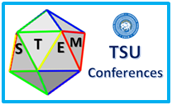2017-05-11
ფიზიკის დეპარტამენტის, ანდრონიკაშვილის ფიზიკის ინსტიტუტის და მაღალი ენერგიების ფიზიკის ინსტიტუტის გაერთიანებული სამეცნიერო სემინარი
ოთხშაბათს, 17 მაისს , 15:00 საათზე, ფიზიკის მცირე აუდიტორიაში (თსუ II კორპუსის #227 აუდიტორია) ჩატარდება ზუსტ და საბუნებისმეტყველო მეცნიერებათა ფაკულტეტის ფიზიკის დეპარტამენტის, ანდრონიკაშვილის ფიზიკის ინსტიტუტის და მაღალი ენერგიების ფიზიკის ინსტიტუტის გაერთიანებული სამეცნიერო სემინარი.მოხსენების თემა: Neutrino astronomy in the Mediterranean Sea and around the globe (from searches to observations).
ნეიტრინული ასტრონომია ხმელთაშუა ზღვასა და მსოფლიოში (ძიებიდან დაკვირვებამდე) .
მომხსენებელი:Prof. Ulrich Katz (University of Erlangen, Germany).
პროფესორი ულრიხ კაცი (ერლანგენის უნივერსიტეტი, გერმანია)
ანოტაცია:
The detection of high-energy cosmic neutrinos and their astrophysical interpretation has been a vision for decades, motivating detectors of ever increasing size and sensitivity. Since 2013 the vision is reality: Neutrinos of cosmic origin in the energy range between some 10 TeV and some PeV have unambiguously been discovered with the IceCube detector in the deep South Polar ice. We now have to go the next step from this first glimpse at the neutrino sky to full-sky neutrino astronomy. This will in particular require a neutrino telescope in the Nothern hemisphere: KM3NeT, a cubic-kilometre-scale future neutrino telescope in the deep Mediterranean Sea. KM3NeT builds on the experience with the ANTARES detector; it will investigate neutrinos of cosmic origin and also use the exact same technology to determine the neutrino mass hierarchy from precision measurements of atmospheric neutrino oscillations. I will present the IceCube signal, the KM3NeT detector, report on the status of cosmic neutrino measurements and the performance of the first KM3NeT detector modules in operation, and discuss the physics reach of KM3NeT.
« იხ. ყველა სიახლე
















